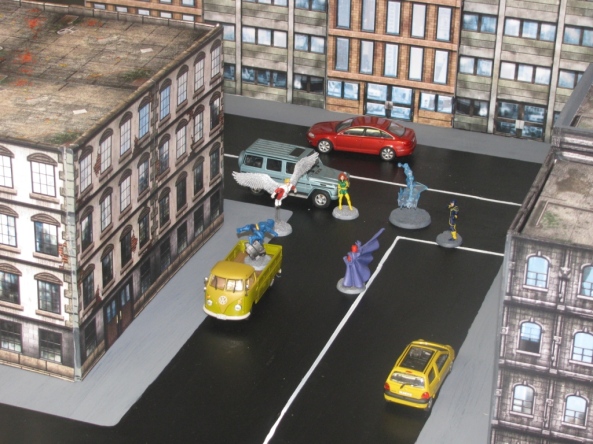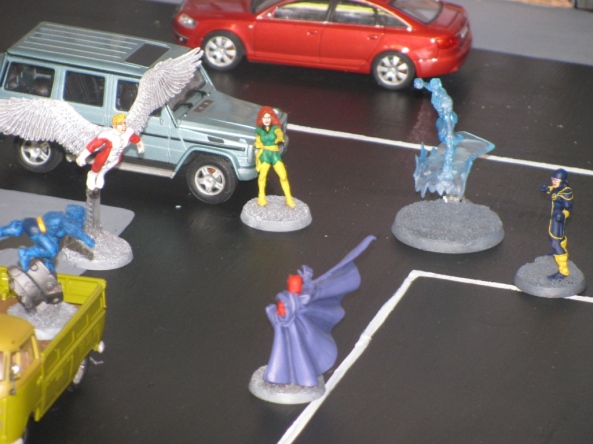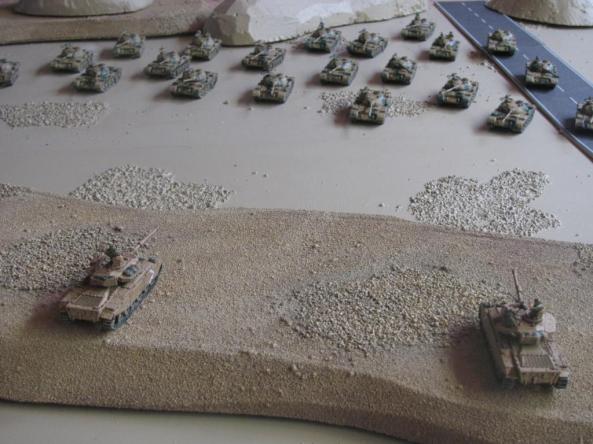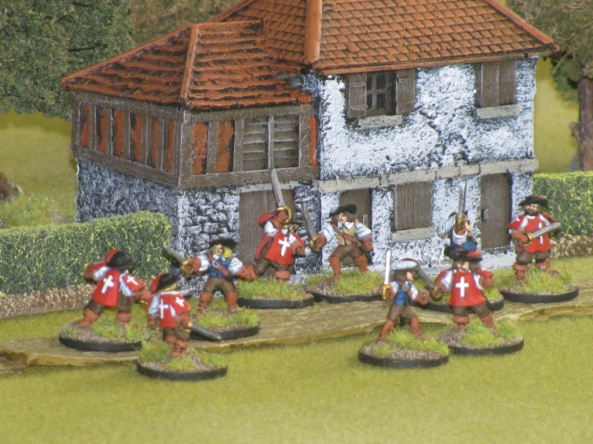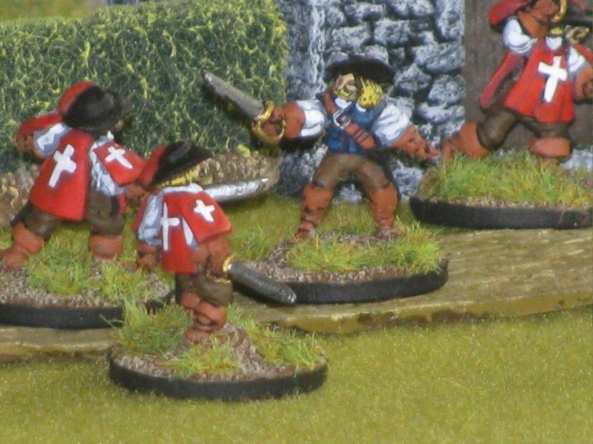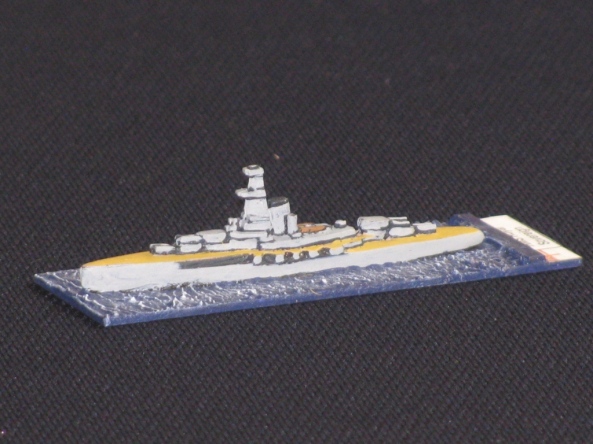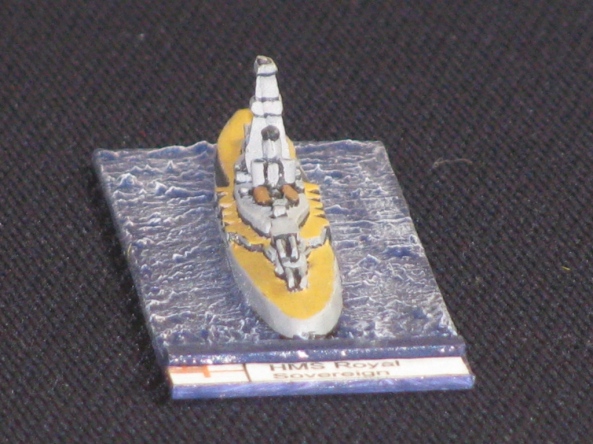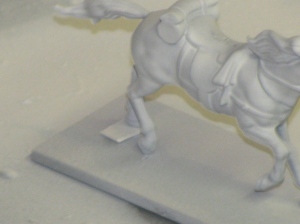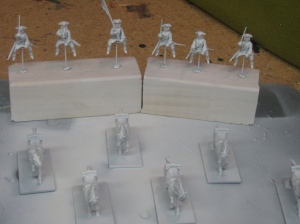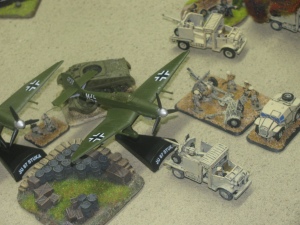Assuming the world doesn’t perish in a great fiery cataclysm tomorrow (although with the paucity of posting you could be forgiven for thinking that I had already gone that way), the following are the wargaming projects I have earmarked for completion in 2013.
1. The French Revolutionary Wars. This is my ongoing 15mm project that I hope to have completed and ready to game with by the end of January. A month ago I was on track for this, but then I just got so busy that my production line of painting halted completely. I’m looking at solo gaming this using an adaptation of Neil Thomas’ rules in his Introduction to Wargaming book. I love the basic simplicity, but I have altered the structure to make it simultaneous phases allowing all units the opportunity to move and fire. I’ve also added a command structure with a purpose, so I’m looking forward to trying this out. I plan to game out the Battlegames tabletop teasers and scenarios out of Charles Grant and Stuart Asquith’s Wargames Scenarios.
2. Star Wars. I’m pretty happy with the adaptations I’ve made to the basic FUBAR rules and the lists I’ve created. I’ve had several games now, but I keep forgetting to take my camera, so no battle reports I’m afraid. Anyway, I’m just painting up all of the bases unit by unit at the moment, and this looks due to be finished at the beginning of next year. I had considered repainting the old prepaints, but it has occured to me how much less stressful it is not to worry about chipping paint jobs. I have no qualms with handling the figures indelicately and for that reason I don’t think that I will bother. It is not, at least, a priority.
3. Superheroes. I’m just getting more and more into this project, despite the fact that I am still not sure exactly how the rules will work. I have Supersystem, but to be honest, I’ve read through and had a couple of trial solo games, but the rules just don’t work for me. I like simple, and although many people have commented that these are simple, I don’t find this so. I’ve discovered some rules written by Pete Jones of Freewargamesrules which, like FUBAR are written on one sheet of A4. I’ve read through them and find them very elegant. I have some ideas to add to them which I’ve been dreaming up over the last few days, although I haven’t yet put pen to paper. I’ve also been building up a cityscape terrain and repainting the odd character here and there. Below are a couple of my efforts.
And a close up of the figures. Recalling the first issue of X-Men, it is the original X-Men vs Magneto. Although versus the modern versions of the most uncanny teens of all I think the master of magnetism is in a bit of trouble. Then again, the odds are pretty good that Jean Grey will actually be dead within a few seconds, as is her wont.
4. The Yom Kippur War. This is all painted now, with an accumulation of 21 lovely T-55s. The terrain is done too. So all that is left is to actually playtest the lists we have for 3rd edition. I’m determined to do this in 2013, along with writing some scenarios based on the fighting in the Sinai.
‘So Shmuel, another boring day sitting on this hill… Hang On! WTF!’
Yes it is a T-55 parking lot – so actually quite realistic for some of the Egyptian tank attacks in 1973. Still, I wouldn’t want to be in one of those two Sh’ots. Quite impressed I got all of the T-55s into the picture actually.
5. The Three Musketeers. Unless it is sci-fi or superheroes I am making 15mm (18mm) my scale of choice, basically because of the interchangeability of scenery and the swiftness of painting. I purchased all of the different packs in the Blue Moon Miniatures Three Musketeers range because I couldn’t resist the figures or the idea of gaming it. I’ll be using Flashing Blades from Ganesha Games and these are the first few figures that I’ve painted.
‘Ah Monsieur! You giggled! Your giggling is an insult to my honour. Prepare to fight to the death!’
Yet again our heroes skewer their enemies over an insignificant matter which would be indefensible in a court of law today, but which was apparently a perfectly reasonable incitement to kill in the France of Louis XIII. Anyway, they are the cardinal’s men, and obviously baddies that deserve it.
Close up of Aramis dueling away.
6. The Great War. All based up and ready for undercoating, these are the 18mm Blue Moon Manufacturing British and German Late War figures. This is a major project, not because of the figures, but because I am going to construct a detailed 4′ x 4′ trench system for them. I’ve weighed this up a lot. My favourite period to game is 1918 where the lines were much more fluid, and for that modular free-standing trenches would be sufficient. But I might want to fight out earlier battles, and in 1918 there were still trench lines that were the old ones from the battle of the Somme and the Hindenburg line which had been reoccupied and were fought over. So I am going to go the whole hog and construct a system. I’m looking at using the Too Fat Lardies rules – Through the Mud and Blood, and have recently made up a series of cards for them.
Also Great War, but a departure from the norm, is the construction of naval fleets for the Germans and the British in 1/3000. I just love Dreadnought Battleships, especially in this period and so earlier this year I purchased to starter packs from NavWar. I’ve been surfing the net looking at possible rules, and it came down to a choice of Naval Thunder or Victory at Sea (WWI version). After reading several reviews I came to the conclusion that I will go with Victory at Sea, because everyone has said that they are simple – and so am I.
My first completed Battleship is below:
HMS Royal Sovereign, ready to set to sea.
So those are the aims for 2013. I have plenty of other projects kicking around which I may get to next year as well, but for now I want to keep it modest and achievable. Then anything else will be a bonus. More to the point, I want to make sure that I actually play the games that I am working on. Too often my plan is to build and paint a project and i don’t really give the gaming a fair go. The one exception was the Marlburian period where I played a series of solo and opposed games in a linked campaign. The aim is to do something similar with the French Revolution (again set in the imagi-nation of Frankenberg) and the Superheroes (a linked series of adventures).
Well, have a happy end of ages when the long count finally gets to where it is going, and hopefully over the Christmas holiday period (we get 6 weeks in NZ), I can post a little more often.
Nate


